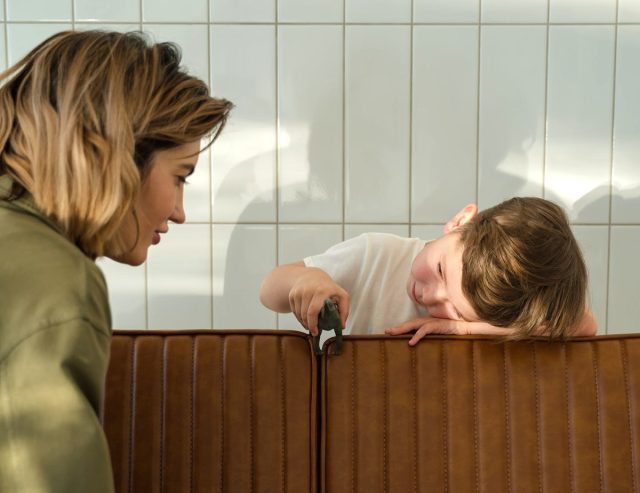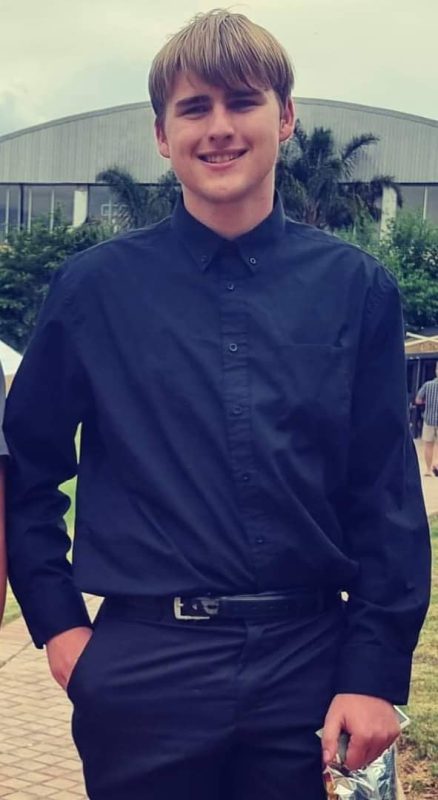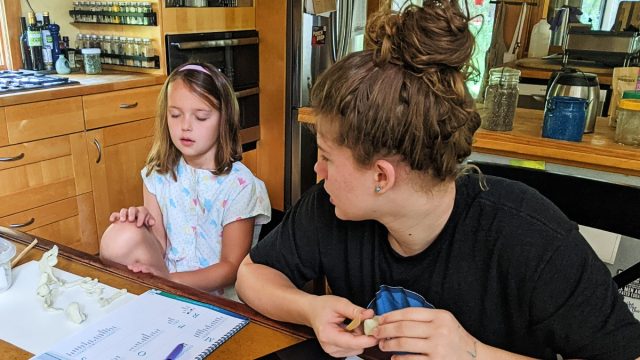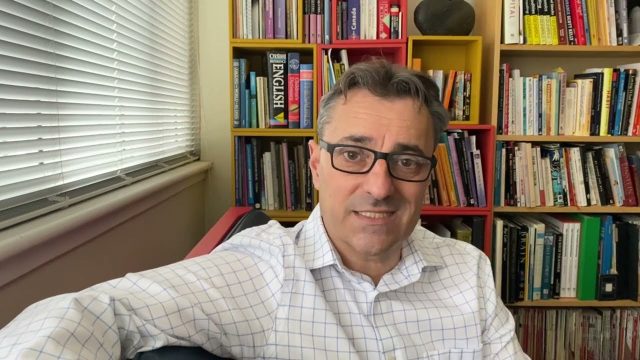How a Davis Program Turned my Son’s Life Around

As a mom, I recognized when my son James was in preschool that he was exceptionally bright despite a severe early speech delay. His imagination was off the charts. He would remove himself from his peers, choosing to get lost in his fantasy world. But his pre-reading skills and early numeracy were not developing, and this added to my sleepless nights.
At the age of six, James started school formally, and our life descended into chaos. He was like a fish out of water and his anxiety levels shot through the roof. I had to literally drag him to school kicking and screaming, and in the afternoons he would physically attack me on the drive home, biting me and ripping out my hair.
His teacher referred us to an educational psychologist, who advised that we place him in a remedial school. Not long after, I was called in again to a panel of serious faces that told me that my child was unteachable. He could not sit still and did not want to conform. He kept slipping into his fantasy realm, where he could be anything.
His teachers acknowledged his exceptional intelligence, though. To them, it appeared that he was learning to read. But I quickly realized that he had just memorized the pages from what he heard in class and faked it to avoid appearing stupid.
Eventually, I learned more about what was then known as Asperger Syndrome and high functioning autism. I was able to get the school to refer us to a child psychiatrist who confirmed my suspicions and gave James an official diagnosis. I moved James to a special school for kids with autism. Here he had a phenomenal young male teacher who recognized his intellect and incredible mind. James adored him and his emotional healing began through their bond. But reading progress was still stuck, and at eight years old, he could only recognize his name.
Ultimately, yet another new label was added—Dyslexia! I felt so defeated and overwhelmed. How would I ever find the right school for James? Our education system struggles to find a place for a child who reads below first grade but needs the intellectual stimulation offered by college-level courses.
Around this time, I accepted a teaching position at Radford House School. Radford House is the only official school for gifted children in my country, I very quickly learned that my instincts about James were spot on. So many of the children in my care shared his quirks and way of thinking. It was also the first time I learned what 2e (“twice exceptional”) means.1
The empathy I brought to the table, fostered by my personal experience, helped me form deep bonds with my students and their families. I became close to a mom who ran a reading center and I asked her if she could help me get to the bottom of James’ reading struggles. She could tell that his issues were beyond the scope of her programs, but she had been researching the Davis Dyslexia Correction Program. As luck would have it, a four-day training workshop was coming up in Cape Town, and she suggested that we go together.
This turned out to be a life-changing event because I was able to get James ten days of one-on-one training with the Davis Facilitator who taught the workshop. It was not cheap, and it took every resource we had available to make it happen. There were a lot of skeptics who thought I was foolish to spend that much money, but I felt that it was the right thing to do—and sometimes, you have to trust the light at the end of the tunnel isn’t another oncoming train.
By this time, James was almost 11. He had come a long way and his challenges weren’t always immediately obvious to people meeting him. This ability to partially blend in is why 2e kids are so often misunderstood. James seemed like a regular kid who talked way too much, was prone to overreacting, and needed his mother to teach him some damn manners. He was also curiously obsessed with DNA, said the most embarrassing things at most inappropriate times, and seemed to have a factual answer for everything.

The facilitator had his work cut out for him. He admitted that James was one of his most challenging students—essentially completely illiterate and autistic, albeit high functioning. Fortunately, the Davis Program catered for autistic learners as much as it did for dyslexic ones. The marriage of the two approaches completely changed James’ life.
It took two draining days and endless negotiations to get James to actively participate. On day three, the facilitator won James over and they began working through the program in earnest.
In no time at all, James could recognize and name the letters of the alphabet. And he was excited about making attempts to read words in his environment. But the most significant shift came with how he managed his autism traits. He became more aware of the consequences of his actions and could self-regulate more effectively. Autism doesn’t go away, and I wouldn’t want it to. It is a part of what makes my child unique and goes hand in hand with his gifted mind. But the life skills he’s gained and is working towards developing further have knocked down massive obstacles to his future.
I had no unrealistic expectations. James has one of the most severe cases of dyslexia there is. So, I didn’t expect him to suddenly start reading novels and acting like other kids around him. But we had made enough progress that he could finally enter the school system shortly before turning 12.

James was accepted to a small support school. One of the teachers at his new school recognized that James was 2e. She agreed to take James on for 18 months and bridge him between the skills class and the general studies classes. This would have him ready just in time for high school. He would also receive formal accommodations, like allowing a scribe to help him with written tests.
Thanks to his teacher’s continuous encouragement and commitment to challenge him, and James’ own determination, guess what happened? My boy did it! He recovered six years of school in the space of only 18 months. I never thought it would be possible, but my boy was going to high school!
Last year, just after he turned 17, I was called in again. Because of his late start, James is a few years older than his peers. The nature of his school meant that they limited the subjects that they offered, focusing on fewer academic areas that still met the minimum requirements.
This meeting was called to tell me they could no longer accommodate his needs, but for a reason unlike I had ever heard as the mom on the other side of the principal’s desk. They could no longer accommodate him because he had surpassed anything they could offer him. They would be doing him a disservice, limiting his potential and future options, and felt he needed to move to an environment that could challenge him more and offer him subjects like science, engineering, and business studies through to graduation.
This blog post is an excerpt taken from a longer article, “My Journey Raising a Twice-Exceptional (2e) Child”, originally published at Learnfully.com. The Davis Facilitator who worked with James is Axel Gudmundsson.
References
- The National Center for Gifted Children defines 2e as children who “have the characteristics of gifted students with the potential for high achievement and give evidence of one or more disabilities as defined by federal or state eligibility criteria.”









